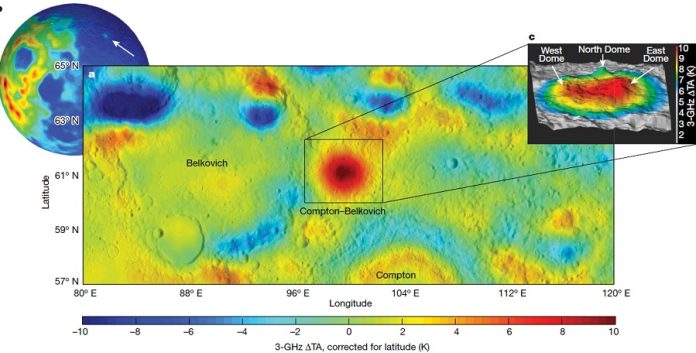
Granite is a rock formed by magma during volcanic activity, and it’s mostly found on Earth.
But guess what? Scientists now believe there’s a huge granite formation on the Moon, too!
This surprising discovery could tell us more about the Moon’s hidden volcanic processes.
In a report published in the scientific journal Nature, researchers led by Timothy Glotch, a professor at Stony Brook University, explain their fascinating find.
Until recently, only tiny bits of granite had been found in the moon rocks brought back by Apollo astronauts.
And a few small granite-like features had been spotted on the Moon’s surface. But the discovery of a large granite body, bigger than 50 kilometers in diameter, under the lunar surface?
That’s something new!
This granite body was detected beneath the Compton-Belkovich Volcanic Complex (CBVC) on the far side of the Moon.
To find it, the team used remote sensing tools from orbit around the Moon, including microwave radiometry and gravity measurements.
“Usually, granite needs water-bearing magma or plate tectonics to form,” explains Glotch. But the Moon doesn’t have plate tectonics and only contains a tiny bit of water. So, this discovery is really puzzling – what unknown process could be causing the granite formation?
The team has some theories, like the separation of a specific type of molten rock (known as KREEP) or the partial melting of a crust rich in KREEP.
Both ideas would need an unusually water-rich layer underneath the CBVC and a varied lunar mantle, the layer of the Moon beneath the crust.
The discovery implies the existence of an evolved granite system on the Moon, similar to those found on Earth. This is especially surprising because it’s located outside of the Procellarum region on the Moon, an area known for its unique features.
In addition to this exciting find, the researchers’ methods offer a new way to map planetary geothermal gradients from orbit using passive microwave radiometry. This means we could get a better understanding of structures that produce heat within the crust and interior of planets.
These techniques could be used more widely, increasing our knowledge of geothermal processes on the Moon and other planets.
The team’s research builds on over a decade of work using remote sensing to map the Moon’s surface and interior.
Their next big project? They’re planning to target the newly discovered granite regions with a NASA rover mission in 2026!
Follow us on Twitter for more articles about this topic.



